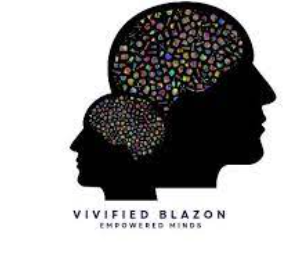
Unlocking the Mysteries of Blazonry: Decoding the Ancient Language of Knights and Shields
Today, I want to introduce you to a very strange and mystical language that reminds me of the times when knights roamed the Earth. Each time you look at a coat of arms, you see a nice (and sometimes weird) picture with stylized animals, flowers, or other intricate elements. However, the truth is that there is even a special quasi-language to describe these symbols. In a time when thousands of banners adorned the land, and there were neither colored printing nor mobile devices, a unique language was created for the purpose of identification and communication, and it was named “blazon.”
In medieval Europe, knights wore elaborate coats of arms on their shields, banners, and surcoats. These symbols helped identify them on the battlefield, where armor and helmets obscured individual faces. Coats of arms were crucial in distinguishing friend from foe, both during military engagements and in tournaments. The development of a standardized language to describe these unique designs allowed for accurate recognition and identification of individuals and their allegiances.
With the rise of heraldry, especially during the High Middle Ages, the need for a formal language to describe and record coats of arms arose. This language needed to be concise, precise, and easily understandable. Thus, blazon was developed as a specialized vocabulary to describe the various elements and configurations on a coat of arms accurately. This standardized system allowed heraldic artists, historians, and heralds to accurately document and communicate coat of arms designs across different regions and generations.
There are several rules to it, like:
Tinctures (Colors): Blazonry uses specific terms to describe the colors used in coats of arms, known as tinctures. Some common tinctures include:
Or (Gold/Yellow): Represents wealth and generosity.
Argent (Silver/White): Signifies purity and peace.
Azure (Blue): Symbolizes loyalty and truth.
Gules (Red): Represents courage and warrior spirit.
Purpure (Purple): Symbolizes royalty and sovereignty.
Sable (Black): Signifies constancy and grief.
Vert (Green): Represents hope and joy.
Tenne/Tawny (Orange): Signifies ambition and endurance.
Partitions and Positions: Blazonry provides terms for dividing the shield into sections or arranging charges in different positions. Common divisions include “per pale” (divided vertically into two parts), “per fess” (divided horizontally into two parts), and “quarterly” (divided into four quarters). Charges can be “in chief” (placed at the top), “in base” (placed at the bottom), or “in bend” (diagonally from the top left to the bottom right).
Charges: Charges are the symbols or figures placed on the shield. They can include animals, plants, weapons, tools, mythical creatures, and more. Blazonry provides precise terms for describing the position, orientation, and attributes of these charges.
Combinations and Marshalling: Blazonry allows for the combination of multiple coats of arms to represent alliances or inherited titles. Marshalling refers to the arrangement of multiple coats of arms within a single shield to represent different family connections.
There is one particularly interesting website about blazonry, where you can test your idea and skills in blazonry.
Let’s take a look at one of the shield examples and its blazon. Below is the artistic drawing of the Kovalevs family shield, which has Eastern European roots.
The blazon would sound like “Field purpure a chevron orange, in fess point an eagle displayed reversed sable, in nombril an anvil displayed or; all within an orle of thorns sable. Above the shield a ribbon inscribed with the motto ‘In Unity We Thrive’; below the shield, a ribbon inscribed with the name “Kovalevs”. Drawn in the Stuart shape with angular base.”
Note that the explanation of the artistic depiction is presented after the general description. The shape of the shield itself is quite unusual and exhibits a strong regional influence.
There is another option, which is also widely used: “Field purpure, a chevron tenné, in fess point, an eagle displayed contourné sable; in nombril, an anvil displayed or; all within an orle of thorns sable. Above the shield, a ribbon inscribed with the motto ‘In Unity We Thrive’; below the shield, a ribbon inscribed with the name ‘Kovalevs’. Drawn in the Stuart shape with an angular base.”
This option includes usage of French words, however generally both options are usable.
What would it all mean in normal language?
“The shield has a purple background with an orange chevron in the center across the shield. At the center top of the shield, there is a black eagle with its wings spread out and facing the opposite direction. In the middle of the shield, there is a golden anvil. The entire shield is surrounded by a border of black thorns.
Above the shield, there is a ribbon with the motto “In Unity We Thrive” written on it. Below the shield, there is another ribbon with the name “Kovalevs” written on it. The coat of arms is designed in the Stuart shape, with an angular base.”
If you are interested in gaining a deeper understanding of it, I suggest checking out websites like https://www.theheraldrysociety.com/ or https://drawshield.net/. Even though it may seem inconsequential, these depictions surround us on a daily basis as coats of arms of cities, companies, or noble individuals. It is always fascinating to have a sneak peek at their meanings when most other people won’t have a clue.







